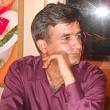Consumer forum

Querist :
Anonymous
(Querist) 25 October 2011
This query is : Resolved
my sister case against medical negligence is going on in the consumer forum. she became disabled due to failure of knee surgery. kindly send me the useful judgments. i am very poor to save my sister. that cruel doctor still striving hard to win the case by using his own doctor friends. please help me
 ajay sethi
(Expert) 25 October 2011
ajay sethi
(Expert) 25 October 2011
Jacob Mathew v. State of Punjab and another - 2005 SCCL.COM 456. Criminal Appeal No. 144-145 of 2004 decided by the Supreme Court on August 5, 2005.
The Supreme Court recently stated in Dr Jacob Mathew’s case (1) that in order to make a doctor criminally responsible for the death of a patient, it must be established that there was negligence or incompetence on the doctor’s part which went beyond a mere question of compensation on the basis of civil liability. Criminal liability would arise only if the doctor did something in disregard of the life and safety of the patient. Certain directions have also been given in the case.
Negligence, in simple terms, is the failure to take due care and caution. It is a breach of a duty caused by the omission to do something which a reasonable person – guided by those considerations which ordinarily regulate the conduct of human affairs – should have done. It may also be doing something, which a prudent and reasonable person would not have done.
The essential components of negligence are: ‘duty’, ‘breach’ and ‘resulting damage’. These definitions are rather relative and can change with the circumstances. When trying to drag a person away from the clutches of an attacking animal, one cannot ask whether this would cause damage to the person’s limbs. Doctors can also be faced with similar contingencies. On finding an accident victim in a dangerous condition, a doctor may have to attempt a crude form of emergency surgery to try and save the person’s life. No negligence is involved in such cases.
Under the civil law, victims of negligence can get relief in the form of compensation from a civil court or the consumer forum. Here, the applicant only needs to prove that an act took place that was wanting in due care and caution, and the victim consequently suffered damage. There is a difference between civil and criminal negligence. However, in certain circumstances, the same negligent act may also be seen as criminal if it constitutes an offence under any law of the land.
Since the medical profession renders a noble service, it must be shielded from frivolous or unjust prosecutions. With this perspective in mind the Court went into the question as to what is actionable negligence in the case of professionals. The law now laid down is as follows:
1. A simple lack of care, an error of judgment or an accident, even fatal, will not constitute culpable medical negligence. If the doctor had followed a practice acceptable to the medical profession at the relevant time, he or she cannot be held liable for negligence merely because a better alternative course or method of treatment was also available, or simply because a more skilled doctor would not have chosen to follow or resort to that practice.
2. Professionals may certainly be held liable for negligence if they were not possessed of the requisite skill which they claimed, or if they did not exercise, with reasonable competence, the skill which they did possess.
3. The word ‘gross’ has not been used in Section 304A of IPC. However, as far as professionals are concerned, it is to be read into it so as to insist on proof of gross negligence for a finding of guilty.\
4. The maxim Res ipsa loquitur (Let the event speak for itself; no other evidence need be insisted) is only a rule of evidence. It might operate in the domain of civil law; but that by itself cannot be pressed into service for determining the liability for negligence within the domain of criminal law. It has only a limited application in trial on a charge of criminal negligence.
5. Statutory Rules or executive instructions incorporating definite guidelines governing the prosecution of doctors need to be framed and issued by the State and Central governments in consultation with the Medical Council of India (MCI). Until this is done, private complaints must be accompanied by the credible opinion of another competent doctor supporting the charge of rashness or negligence. In the case of police prosecutions, such an opinion should preferably from a doctor in government service.
6. Doctors accused of rashness or negligence may not be arrested simply because charges have been levelled against them; this may be done only if it is necessary for furthering the investigation, or for collecting evidence, or if the investigating officer fears that the accused will abscond.
The Supreme Court has not stated, even now, that doctors can never be prosecuted for medical negligence. It has only emphasised the need for care and caution in prosecuting doctors in the interests of society. A certain amount of immunity or extra insulation is now allowed to them considering the noble service rendered by their fraternity and in view of the reports that complainants often use criminal cases to pressurise medical professionals and to extract unjust compensation.
This immunity is available only in criminal courts and not elsewhere. The principles laid down above may apply to other professionals like engineers and lawyers as well. The decision in Jacob Mathew’s case(1) is thus a landmark judgment though some of the principles mentioned therein have been mentioned in earlier judgments.
 ajay sethi
(Expert) 25 October 2011
ajay sethi
(Expert) 25 October 2011
www.issuesinmedicalethics.org/134ed110.html
by MRH Nair - 2005
 ajay sethi
(Expert) 25 October 2011
ajay sethi
(Expert) 25 October 2011
SC ruling a benchmark for doctors
by V. Eshwar Anand In THE TRIBUNE 02/09/2009
THE Supreme Court judgement in the Anuradha Saha medical negligence case is a landmark in the annals of medical jurisprudence. The apex court not only adjudicated on how to determine criminal negligence on the part of a doctor or a group of doctors in the event of a patient’s death but also imposed greater responsibility on them on the universal treatment protocol. It has also reinforced a patient’s right to know the line of treatment being followed by doctors, including the risks involved in the treatment.
Significantly, the Bench consisting of Justice S.B. Sinha and Justice Deepak Verma has upheld the acquittal of three doctors from the charge of criminal negligence causing the death of Anuradha Saha 11 years ago. While imposing a penalty of Rs 5 lakh on Kolkata’s Advanced Medical Research Institute (AMRI) and Rs 1 lakh on Dr Sukumar Mukherjee that treated Anuradha, it accepted the right of her husband, Kunal Saha, to seek compensation by way of tortuous liability for his loss and mental trauma.
The compensation to be paid by AMRI and the doctors individually will be decided by the National Consumer Disputes Redressal Commission, where Kunal has claimed Rs 77.7 crore as damages. The judgement is being viewed by many as the judiciary’s acknowledgement of the deficiency in the medical service given to Anuradha. The apex court has upheld the Calcutta High Court ruling acquitting three doctors — Dr Abani Roy Chowdhury, Dr Sukumar Mukherjee and Dr Baidyanath Halder — on the ground that they had no “mens rea (intention) of being rash and negligent”.
After a prolonged trial, Kolkata’s Chief Metropolitan Magistrate let off Dr Chowdhury, and the High Court the other two doctors in 2004. Kunal Saha then approached the Supreme Court. Anuradha was diagnosed with a serious disease called Toxic Epidermal Necrolysis (TEN). Also called Lyell’s Syndrome, in this disease, the patient gets high fever and occasionally suffers from somnolence and lassitude. Owing to the extensive area of eroded skin, the patient loses huge body fluid with consequent disturbances in the electrolyte and fluid balance. She died in 1998 at the age of 36 following complications from a steroid overdose.
Anuradha, a child psychologist, and Kunal, a doctor-researcher on HIV/AIDS, were settled in the US. They visited Kolkata in April 1998 on a vacation. After she suddenly developed fever and skin rash, Dr Mukherjee examined her and advised her rest without prescribing medicine. After a week, when the skin rash appeared more aggressively, Dr Mukherjee prescribed Depomedrol injection (80 mg) twice daily for three days. Yet, her condition deteriorated.
She was admitted to the AMRI hospital on May 11 under Dr Mukherjee’s supervision. Dr Halder found that she was suffering from erithima plus blisters. Dr Chowdhury also examined her. After her condition worsened, she was shifted to Mumbai’s Beach Candy Hospital in a chartered plane. She died on May 28.
Medical opinion has been sharply divided over the administration of steroids, particularly for those suffering from TEN, discovered as far back as 1956. In fact, there are pro- and anti-steroid lobbies, implying that medical science has a grey area in this respect. The treatment protocol for TEN has undergone change throughout the world.
Though doctors used to administer steroid for TEN patients earlier, researchers have later warned against its use after conducting tests of TEN patients with and without the administration of steroids. They found that those treated with steroids did not respond properly thereto. Though researchers have found that the use of steroids was more detrimental than beneficial to TEN patients, some doctors still use steroids. In Anuradha’s case, experts held that Depomedrol of 80 mg twice daily should not have been prescribed under clinical conditions.
Though some use “quick acting” steroids for a short period, at the very early stage of the disease, they quickly stop the same to check side-effects. Her condition is said to have deteriorated because, in addition to Depomedrol (prescribed by Dr Mukherjee), she was given a new steroid, Pednisolone (40 mg), thrice daily (prescribed by Dr Chowdhury and Dr Halder).
The specialists at Beach Candy Hospital were aghast at this patent steroid overdose on Anuradha by Kolkata’s doctors. According to them, a patient could be given not more than 40 mg Pednisolone, once daily, to be reduced to 5 mg within the next five-six days.
More to the point, as the apex court has observed, the Kolkata doctors did not follow the universal treatment protocol for Anuradha. For a TEN patient, supportive therapy is imperative in character, but no such advice was rendered. Despite well laid down procedures in reputed medical journals, they failed to provide primary emergency care, symptomatic therapy, fluid replacement and antibacterial and nutritional support to Anuradha.
Worse, the fact that AMRI did not maintain records of Anuradha’s vital parameters like temperature, pulse rate, blood pressure, etc, was itself an act of “gross negligence”. Still, the apex court rejected Kunal’s petition to book the doctors for criminal negligence under Section 304-A of the Indian Penal Code. Charging a doctor under this section, according to the Bench, is very serious as it will affect his professional status and reputation and the burden of proof will be more onerous.
It held that a doctor could not be held negligent only because the treatment resulted in the patient’s death. He cannot be held liable for “mischance, misadventure or for an error of judgement” in making a choice where two options are available. Even a doctor’s mistake in diagnosis cannot be necessarily construed as a “negligent diagnosis”, according to the Bench.
Even under the law of tort, a doctor can be held liable in respect of an erroneous diagnosis only if his error is “so palpably wrong” as to prove by itself that it was callously arrived at. For imputing criminal liability on a doctor, a very high degree of such negligence is required to be proved, the Bench ruled.
Interestingly, though experts had briefed the Bench and given their evidence about TEN and its treatment protocol, it ruled that the court was not strictly bound by the specialist advice as such evidence was only advisory in nature under Section 45 of the Evidence Act. The court must derive its own conclusion upon considering the expert opinion, it observed.
The judgement is a watershed in medical jurisprudence because it not only put the onus on the doctors for the patients’ treatment but also laid down ground rules on the basis of its judicial pronouncements over the years. The doctors must observe the current practices regarding infrastructure, sterility and hygiene. No prescription should be given to a patient without actual examination.
A doctor should not merely go by the patient’s version about his/her symptoms but also make his/her own analysis, including tests and investigations wherever necessary. Doctors should not experiment unless necessary and even then only after obtaining the patient’s written consent.
The judgement reinforces a patient’s right to know. The Bench has made it clear that doctors must tell patients about the risks involved in any line of treatment they are following. By and large, patients are ignorant about the adverse effects of a medicine. If some reaction is anticipated, the patient must be informed. This was not done in Anuradha’s case.
The Bench’s warning that whether or not a doctor kept a patient informed about the pros and cons of a line of treatment will be considered in every case of medical negligence hereafter is expected to serve public interest immensely and fill up the vacuum in this vital discipline.
http://www.tribuneindia.com/2009/20090902/edit.htm#4
 Shonee Kapoor
(Expert) 25 October 2011
Shonee Kapoor
(Expert) 25 October 2011
What were the facts of the case?
Regards,
Shonee Kapoor
harassed.by.498a@gmail.com

Guest
(Expert) 26 October 2011
I think this will help you out.
 Querist :
Anonymous
(Querist) 25 October 2011
This query is : Resolved
Querist :
Anonymous
(Querist) 25 October 2011
This query is : Resolved
 Guest
(Expert) 26 October 2011
Guest
(Expert) 26 October 2011
